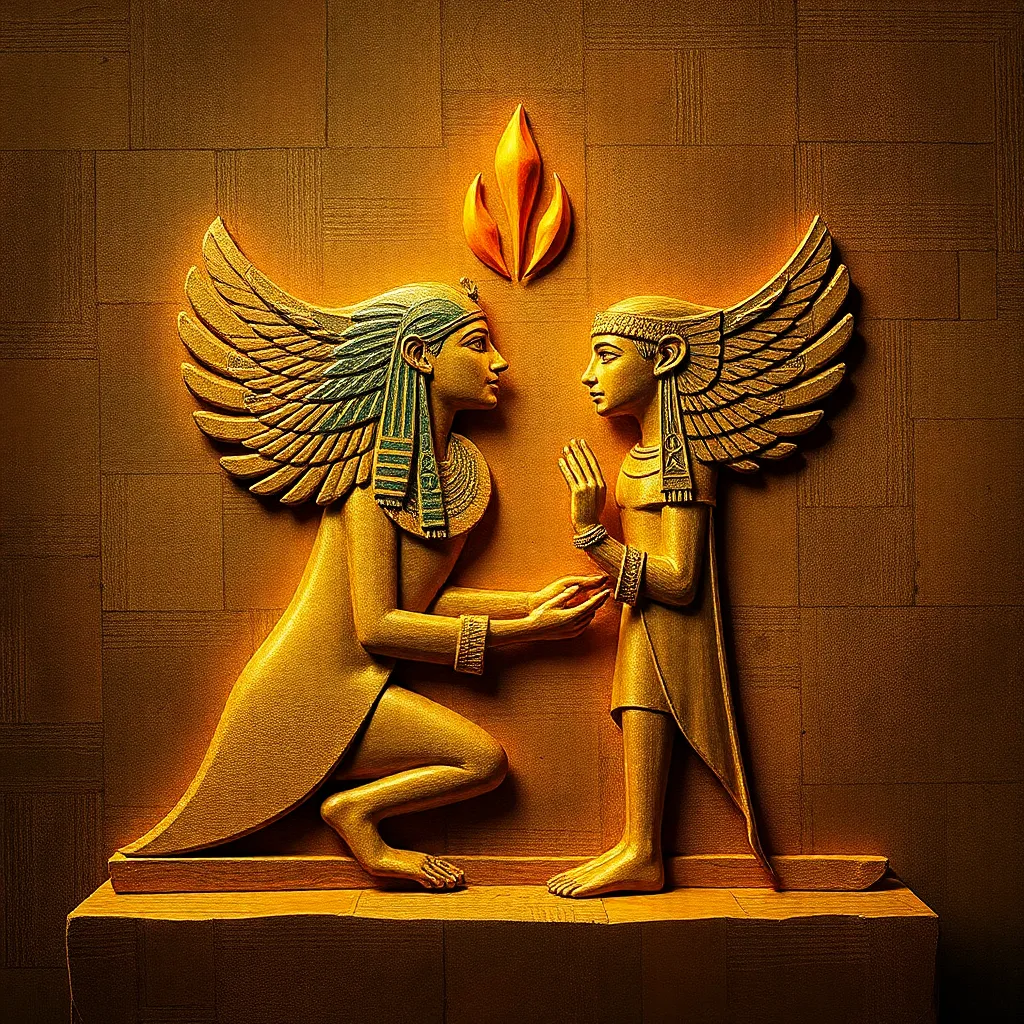The Aten and the Concept of Divine Love and Compassion
I. Introduction
The Aten, a significant deity in ancient Egyptian religion, represents a unique aspect of divine presence. Unlike other gods worshipped in the pantheon of Egyptian belief, the Aten embodies the sun’s life-giving rays and is closely associated with the pharaoh Akhenaten, who redefined the religious landscape of his time. Central to the worship of the Aten are themes of divine love and compassion, reflecting a shift in how the ancient Egyptians viewed their relationship with the divine. This article aims to explore the interplay between the Aten and the concepts of love and compassion, emphasizing their importance in ancient Egyptian spirituality.
II. Historical Context of the Aten
The emergence of the Aten can be traced back to the reign of Akhenaten (circa 1353-1336 BCE), a period marked by revolutionary religious changes. Akhenaten initiated a dramatic shift from the traditional polytheistic practices to a form of monotheism centered around the Aten. This transition was not merely theological but also had profound political implications, as the pharaoh positioned himself as the sole mediator between the Aten and the people.
The Aten was revered as a symbol of light and life, representing the sun’s nurturing and sustaining qualities. This focus on a singular, all-encompassing deity was a radical departure from the worship of multiple gods and goddesses, creating a new narrative of divine love and compassion that resonated deeply with the ancient Egyptians.
III. The Aten and Its Representation
The iconography of the Aten is rich and multifaceted, often depicted as a sun disk with rays extending downward, each ending in hands that offer ankh symbols, representing life. This imagery serves as a powerful metaphor for love and nurturing, emphasizing the Aten’s role in providing sustenance and support to the world.
- Sun Disk: The sun disk symbolizes the Aten itself, radiating light and warmth.
- Rays Ending in Hands: The hands symbolize the Aten’s direct involvement in the lives of the people, offering blessings and life.
- Contrast with Previous Deities: Unlike earlier gods who often required appeasement through rituals, the Aten’s representation suggests a more intimate, loving relationship with humanity.
IV. Divine Love in Atenism
In the context of Aten worship, divine love is interpreted as an all-encompassing force that connects the deity with the pharaoh and, by extension, the people of Egypt. The pharaoh, viewed as the living embodiment of the Aten, served as the intermediary through whom divine love was expressed and received.
Textual evidence from hymns and prayers reveals the depth of this divine love. For instance, the Great Hymn to the Aten, attributed to Akhenaten, eloquently describes the beauty and benevolence of the Aten’s rays, highlighting their role in sustaining life and fostering a sense of unity among all beings.
V. Compassion in Aten’s Teachings
The concept of compassion in ancient Egyptian society was significant, often manifesting in social practices aimed at caring for the vulnerable, including the poor, the sick, and the elderly. The Aten’s teachings aligned with these values, promoting social justice and the inherent worth of every individual.
Key aspects of the Aten’s promotion of compassion include:
- Encouragement of kindness towards others, reflecting the Aten’s nurturing nature.
- A call for equitable treatment of society’s most vulnerable members.
- A vision of a harmonious community under the loving gaze of the Aten.
VI. The Legacy of the Aten’s Concept of Love and Compassion
The legacy of the Aten’s concept of love and compassion extends beyond Akhenaten’s reign, influencing later religious thought and practices. In the context of emerging monotheistic beliefs, the Aten can be seen as a precursor to ethical teachings that emphasize love, compassion, and social responsibility.
Modern interpretations of the Aten’s teachings continue to resonate, reminding us of the importance of love and compassion in spiritual practice. Contemporary discussions often draw parallels between Atenism and various philosophies and religions that prioritize similar values.
VII. Critiques and Challenges to Atenism
Despite its profound ideals, Atenism faced significant opposition during and after Akhenaten’s reign. Many traditional priests and followers of the old pantheon resisted the radical changes, leading to a counter-movement that ultimately resulted in the decline of Aten worship.
The eventual re-establishment of polytheism in Egypt implied a retreat from the ideals of divine love and compassion promoted by the Aten. In contemporary perspectives, scholars often analyze Atenism as a revolutionary yet ultimately unsuccessful attempt to redefine spirituality and human-divine relationships.
VIII. Conclusion
In summary, the Aten represents a pivotal moment in ancient Egyptian spirituality, encapsulating profound themes of divine love and compassion. Through the lens of Akhenaten’s reforms, we see a transformative vision that sought to unify the people under a singular, nurturing deity. The lasting impact of the Aten’s teachings continues to inspire modern reflections on love, compassion, and ethical living.
As we delve deeper into ancient Egyptian spirituality, we are reminded of the universal quest for connection, understanding, and compassion that transcends time and culture. Further study and appreciation of the Aten and its divine attributes can enrich our understanding of humanity’s spiritual heritage.




